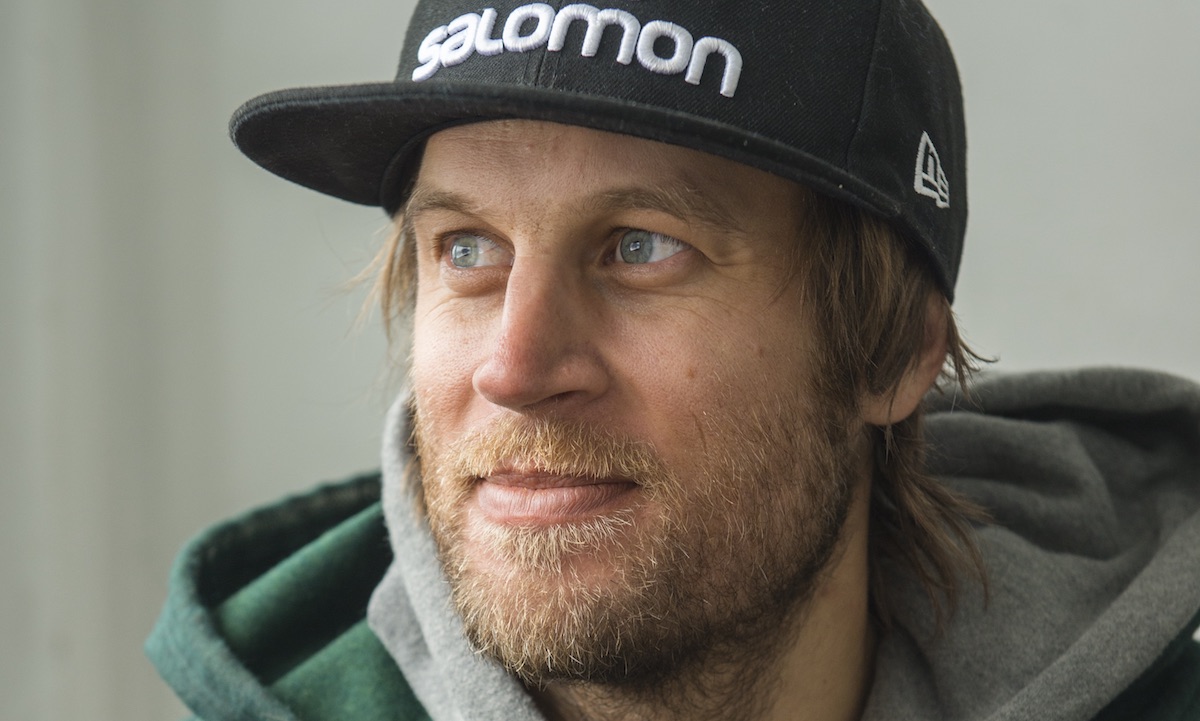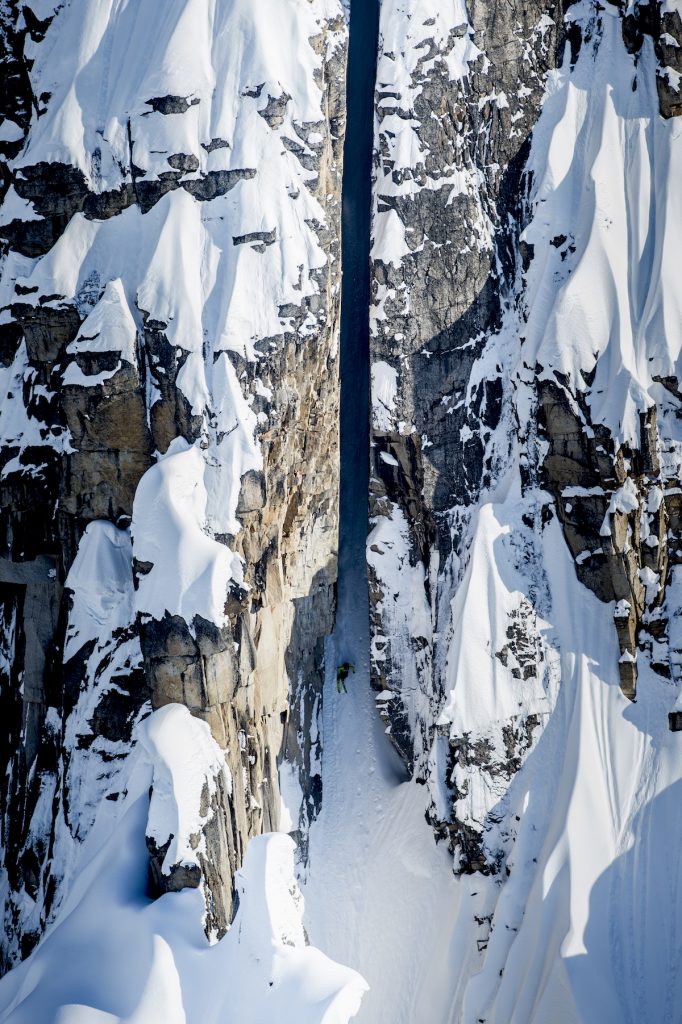15 Minutes with Cody Townsend


AB: We’ve just had an amazing day on the slopes here in Portillo. You’ve been making everyone laugh with your stories, but I’ve also learnt a lot about powering the tip of my ski – thanks! It’s been your first time coaching, so how have you found it?
CT: It’s been awesome! I honestly didn’t know what to expect as I’ve never coached skiing. I thought I would be terrible because it’s so natural and intuitive for me – I learned to ski at such a young age – but it’s cool now being able to translate some of those lessons to other people and watch them improve over the day. It’s awesome, particularly seeing how stoked they are. I’d like to do it again!
AB: We watched your film ‘Days Of My Youth’ last night, featuring The Crack – that incredible line from 2014 that earned you Powder magazine’s ‘Line of the Year’ and millions of hits on YouTube when the clip went viral. Has the furore died down or do you think it’s still what defines you?
CT: The furore has died down, but I think it’s what I’m going to be most known for forever. People still want to talk about it and I can understand that – things went pretty crazy, pretty viral, and most people I meet want to talk to me about That Line.
AB: Go on then, talk us briefly through it…
CT: It was in Alaska. I’d been searching for it for about five years. It was inspired by a couloir I skied in Nevada – called Terminal Cancer – and I wanted to find the big boy version in Alaska. I remember having such a good sensation of skiing Terminal Cancer, with the walls going by super fast; the commitment of once you’ve started going and you’re not really slowing down. I couldn’t think of any couloirs that were bigger, badder and narrower in the Lower 48. The Crack was five feet wide at its narrowest – top was an air in, a 60°-plus vertical drop, the average after that was 50°.
AB: Do you get scared doing that stuff? How do you deal with it?
CT: Yes, of course I get scared. But skiing The Crack was an anomaly; I wasn’t scared at all – I just knew I was going to do it. We had a heli drop us in and then we hiked down to it. I’d been preparing for that line for years, by skiing Terminal Cancer and other couloirs. I knew what kind of skier I am; I ski fast (I was a downhill racer) in tight situations. I was in a really calm state – focused and totally prepared for it. I knew everything was going to go right.
AB: What are your mental checks for a big line?
CT: It’s baby steps; the best big mountain skiers in the world are in their early 30s – you’re in peak physical condition, and big mountain skiing is about experience, building time in the mountains. You don’t see many 19-year-olds going to Alaska and doing those things off the bat – that was my 10th heli trip to Alaska and it’s something you build up to. So when I stand at the top of my line, my confidence is built upon that experience of incremental steps to get to that point. When I’m real scared, I often try to reflect on similar moments from the past to mentally confirm that the line below me is well within my ability.
AB: What’s the scariest line you’ve skied?
CT: Fear is interesting – it’s not necessarily a good representation of danger. It’s connected more to your mind than outside elements. There are lines on which I’ve been far more scared than on The Crack, but that could have been the most dangerous thing I’d skied. As for my scariest line, it’s off an unnamed peak out of Girdwood, Alaska. It was my third trip up to Alaska; I’d been skiing better than I’ve ever skied and I saw this line that at first I thought was way too gnarly – I wanted nothing to do with it. Then we did some warm-up laps while filming for MSP’s film, The Way I See It, and I changed my mind. I thought: “That goes.”

AB: So what happened next?
CT: I figured out the line – every turn in my head happens before I go up there – and memorised it. When see anything standing on the top. The visual intimidation of seeing no more than 10 feet before it rolls over as steep as a cliff, 2000ft vert descent… the emotion was so powerful I couldn’t look down at it. Instead, I looked at the sky behind me – I felt that if I looked down it, I wasn’t going to be able do it. The rational side of me said “go”, while the fear side said “don’t go”. The cameramen counted me in to drop, I pushed off and then went into that hyper-focused calm state that comes with skiing something scary. I skied the main spine, hit the 80-foot drop, big air, and stomped the landing clean. I couldn’t have been more psyched to overcome that fear and have success on something I rationally knew I could do.
AB: Your mantra to us on this camp has been ‘ski harder, ski faster, ski better’ – is that what you tell yourself?
CT: Ha, it’s not actually, I came up with it out here. I’ve been saying that the fundamentals of skiing break down to three fundamental things – harder, faster, better. Seems to work!
AB: So this winter we’ll get to watch you and Elyse skiing together in ‘Drop Everything’, by Matchstick Productions. How’s it being married to a pro skier – do you worry about each other?
CT: Yeah, we definitely worry about each other, but I trust her so much. She was in an avalanche that killed three people [on Stevens Pass in Washington State in 2012. Freeskiing World Tour head judge Jim Jack, Stevens Pass director of marketing Chris Rudolph and skier John Brenan all died, while Elyse was swept 2,000ft in 30 seconds and credits her avalanche bag for saving her life], and that’s as close as it gets. That wasn’t a nice call to get. The thing about our relationship is that we built our lives around the mountains, and we built our lives around skiing. We help each other, we talk and plan together. Of course there are times we worry; I have watched her tomahawk down a 2000ft line in front of me – that was pretty traumatising – but we have trust in each other that we’re going to make good decisions. She runs avalanche courses [in locations across Colorado, California, Utah and Washington] and we constantly talk about skiing and the mountains.
AB: Do you get to ski together much?
CT: For a long time we didn’t – we worked for different sponsors and different film companies so we’d go on separate trips all the time. I remember one year the only time we saw each other in two months was meeting for dinner, sleeping in a hotel, then off we went again. It can be hard but we give each other space – this kind of lifestyle wouldn’t work out with someone who doesn’t understand the sport.
AB: So what’s next for you?
CT: I’ve been busy working on product development with Salomon, so right now I’m going to try and enjoy some time off for a bit as I’ve skied 11 months straight! I’m busy coming up with ideas for things I want to do, pitching them to sponsors and film companies and working towards the winter. There’s no goal in my life to try to top The Crack because what brought me to that line was an obsession with a feeling, with knowing what I wanted to do. It wasn’t like I sought out ‘the line of the year’; it was a place of pure passion that brought me to that point, so to go out there and try to go one better than that is unnatural and therefore dangerous. I have plenty of lines and dreams and mountains I want to ski, but in terms of acclaim I don’t think I’ll ever top The Crack – though I can guarantee I’ll ski rad stuff.